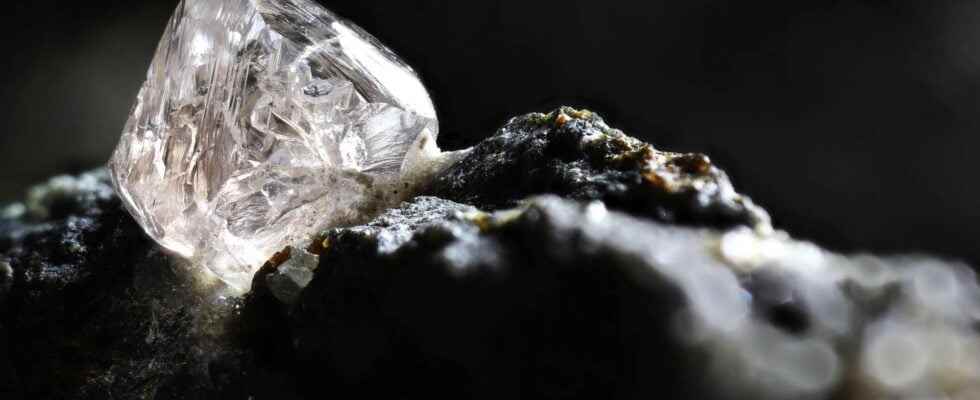Diamonds are formed in the bowels of the Earth, at very great depth and high temperature. They rise to the surface through volcanic eruptions. They are thus found prisoners of magmatic rocks called kimberlites. However, the origin of these very particular magmas is still poorly understood. A new study shows that the initiation of this magmatism is associated with large tectonic cycles and more particularly with the fragmentation of supercontinents.
You will also be interested
[EN VIDÉO] A new harder diamond Video in English – The Australian National University has led a project to make a diamond that is predicted to be harder than a jeweler’s and useful for cutting ultra-strong materials at mine sites.
Trained in depth, diamonds are transported to the surface of the Earth thanks to magmas called kimberlites. These magmas are then erupted at the level of volcanoes and cool to form magmatic rocks containing diamond enclaves. However, these magmas are very particular. They form at very great depth, at the lithosphere-asthenosphere limit, more than 150 kilometers in the earthly mantle and are characteristic of certain areas on the Earth’s surface. Indeed, kimberlites are observed preferentially in cratonic regions, characterized by a lithosphere very old mainland. This observation has long puzzled scientists, because cratons, because of their age, are rather considered very stable regions, associated with an abnormally cold underlying mantle and having a strong resistance mechanical. It is therefore difficult to envisage the generation of magma in this context.
Eruptions associated with periods of fragmentation of the supercontinents
The kimberlites also show another peculiarity: the study of the different deposits shows that kimberlite eruptions do not occur randomly, but rather in pulses, surprisingly synchronized with the cycles of fragmentation of supercontinents. Thus, kimberlitic magmatism seems strongly associated with major episodes of reorganization of tectonic plates. This observation suggests that the formation of these magmas could be caused by disturbances in the cratonic mantle or by sudden changes in the movement plates. But the exact mechanisms of their formation and their rise to the surface are still poorly understood.
A new study submitted to the journal Nature however puts in light the link between the generation of kimberlites and the major tectonic cycles. In particular, it shows that most kimberlites have each time been erupted approximately 25 million years after the start of fragmentation of the supercontinents, suggesting a close link with rifting processes. But how can surface processes (the fragmentation of the earth’s crust) impact the dynamics of the deep mantle and generate the production of magma at a depth of more than 150 kilometers?
Continental opening, the driving force behind the rise of diamonds
Based on the achievement of digital models dynamics, the team of researchers led by Thomas Gernon of the University of Southampton shows that the continental opening and the fragmentation of the cratons generate strong convective instabilities in the asthenospheric mantle. Because if the thickness of the lithosphere of the cratons (150-200 kilometers against 100 kilometers normally) tends to make these areas particularly stable and not very sensitive to tectonic movements, when they end up breaking, it strongly impacts the underlying mantle levels, up to the lithosphere-asthenosphere limit.
The asthenospheric rise caused by the fragmentation of a craton is indeed particularly important because of the strong contrast temperature between the (cold) cratonic lithosphere and theasthenosphere underlying (warm). This contrast induces an effect of convection which destabilizes the deep root of the continental craton. The rapid rise of the hot asthenospheric mantle then causes the partial fusion from the root of the craton, causing the formation of a small volume of kimberlitic magmas which rises quickly to the surface, taking with it the precious diamonds. The generation of this magma can thus erode the base of the craton over several tens of kilometers, a supposition which is verified by numerous geophysical measurements of the thickness of the cratons.
These results show how closely surface processes and deep earth dynamics can be related.
Interested in what you just read?
.
fs11
